Posted by Steve Head on 5th May 2025
Understanding Articulation: What Affects the Articulation of a Cajon?
Articulation in music refers to the clarity and precision with which notes and rhythms are executed. For a cajon, articulation is all about how distinctly you can produce the various sounds—such as the bass, snare, and high tones—so that each one is clear and well-defined. Good articulation allows for precise rhythmic patterns and dynamic expressions, making your playing more impactful and musically expressive. As the owner of Kopf Percussion, I’ve spent years crafting cajons that offer excellent articulation to meet the demands of musicians across various genres. In this blog post, I’ll explore the factors that affect the articulation of a cajon and how I optimize it to achieve the best possible sound.
1. Material of the Tapa
- Impact on Articulation: The material of the tapa, or front playing surface, plays a crucial role in determining the articulation of the cajon. Harder woods like birch or maple are known for producing clear, articulate tones with sharp attacks and minimal overtones. These woods provide a quick response and precise sound, making it easier to distinguish between the different tones and rhythms. Softer woods like mahogany or cedar, while offering warmth and depth, might produce a slightly more rounded tone, which can sometimes blur the articulation.
- Example: At Kopf Percussion, I often choose birch or maple for the tapa when creating cajons that are intended to excel in articulation. The sharp, clear tones produced by birch help ensure that every note is distinct and easily heard, even in complex rhythmic patterns.
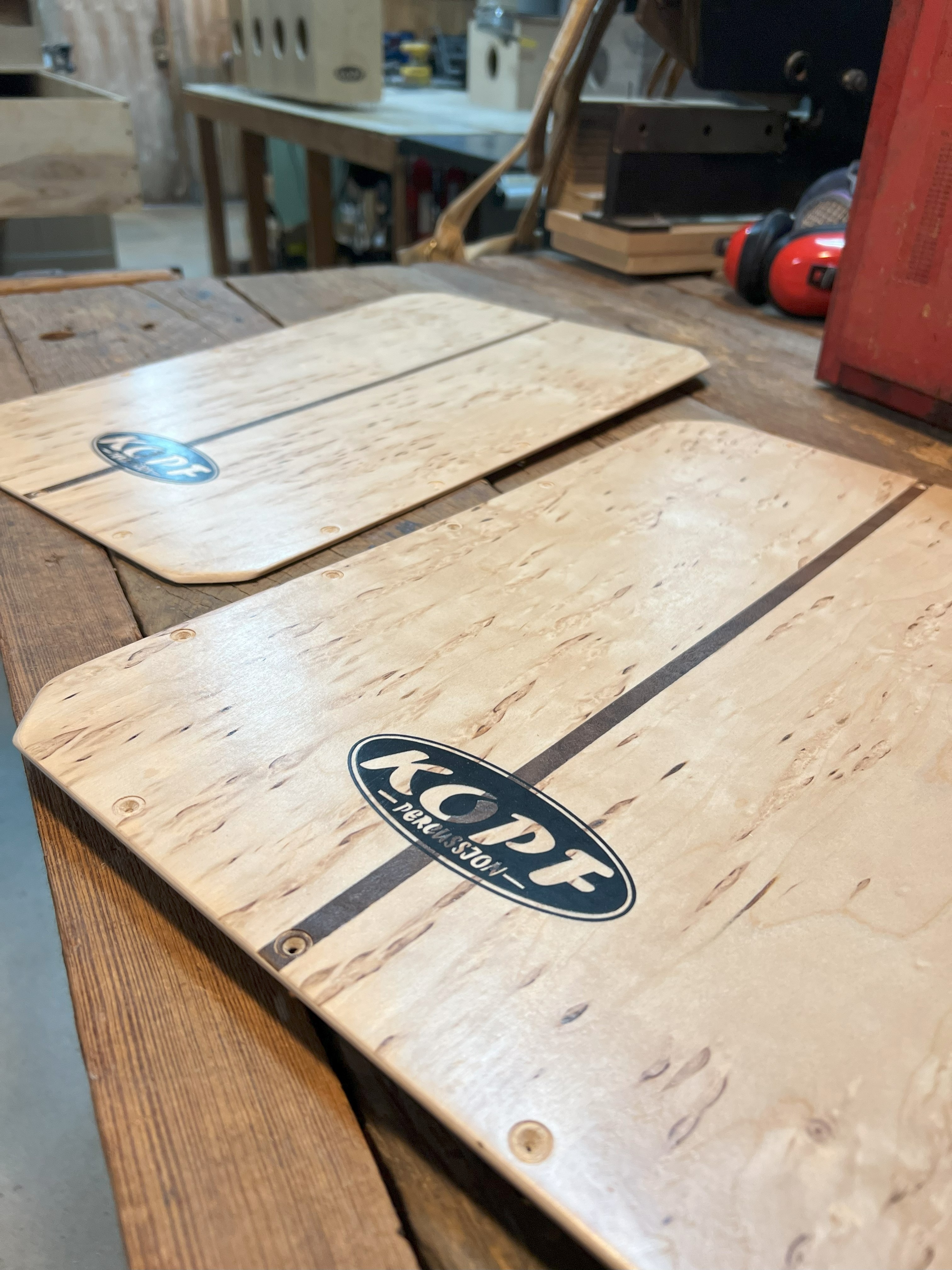
2. Thickness of the Tapa
- Impact on Articulation: The thickness of the tapa also significantly affects articulation. A thinner tapa is more flexible and responsive, allowing for quicker, sharper sounds that enhance articulation. However, if the tapa is too thin, it might produce unwanted overtones that can muddy the sound. On the other hand, a slightly thicker tapa can provide more control and focus, leading to clearer articulation with less risk of extraneous vibrations.
- Example: When prioritizing articulation, I recommend a tapa that is balanced in thickness—not too thin to avoid excessive overtones, but not too thick to ensure a responsive and precise sound.
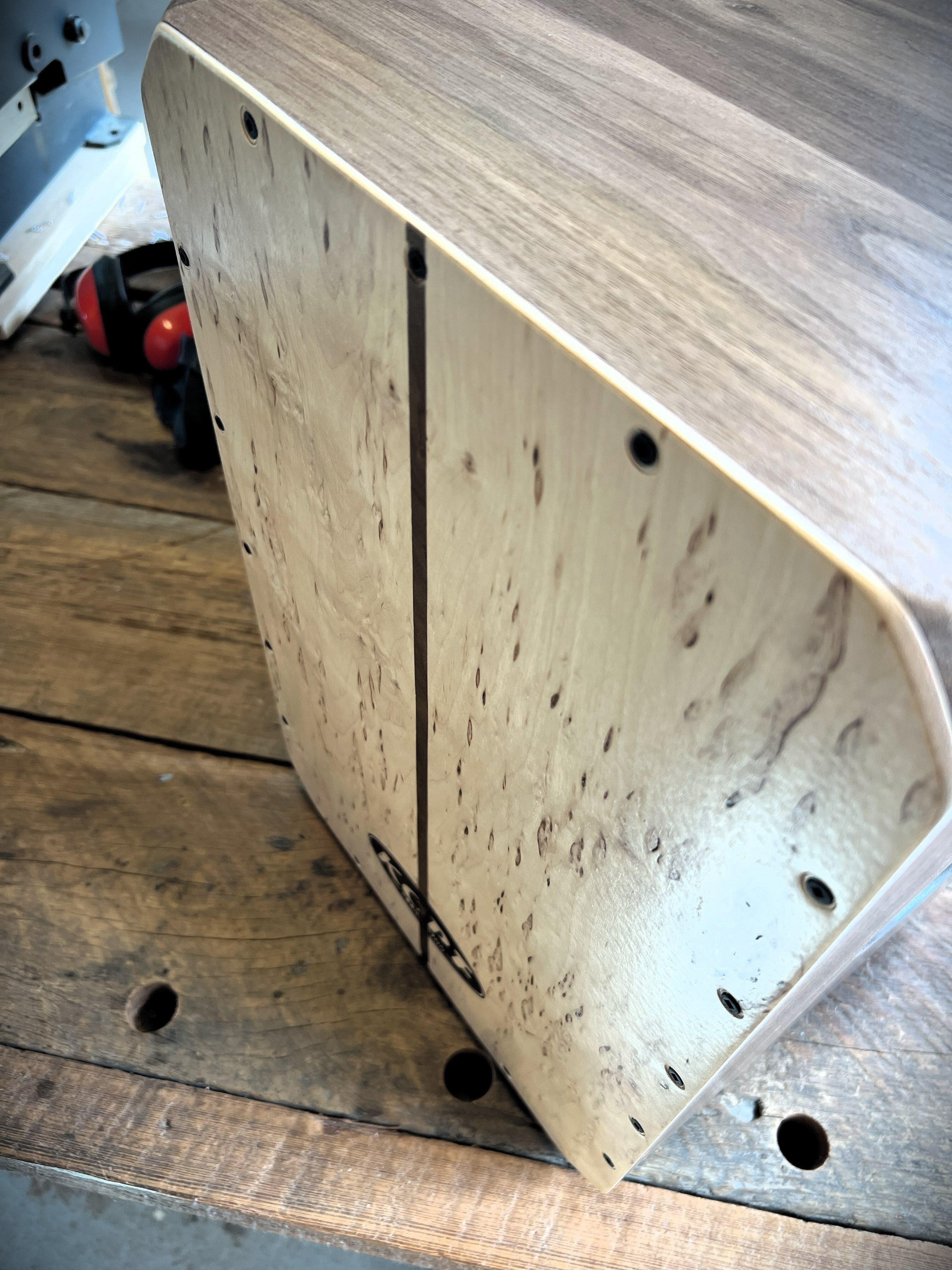
3. Body Material and Construction
- Impact on Articulation: The material and construction of the cajon’s body also play a significant role in shaping articulation. Dense woods like walnut, maple, cherry and birch are preferred for their ability to produce a tight, focused sound with minimal unwanted resonance. The construction of the cajon, including the internal bracing and the thickness of the walls, affects how sound waves travel within the instrument and how clearly each tone is articulated.
- Example: At Kopf Percussion, I use high-quality tonewoods and careful design to ensure that the cajon delivers clear, articulate tones. The minimal internal design reduces sound muddiness and focuses the energy of each strike, producing a tone that is both precise and expressive.
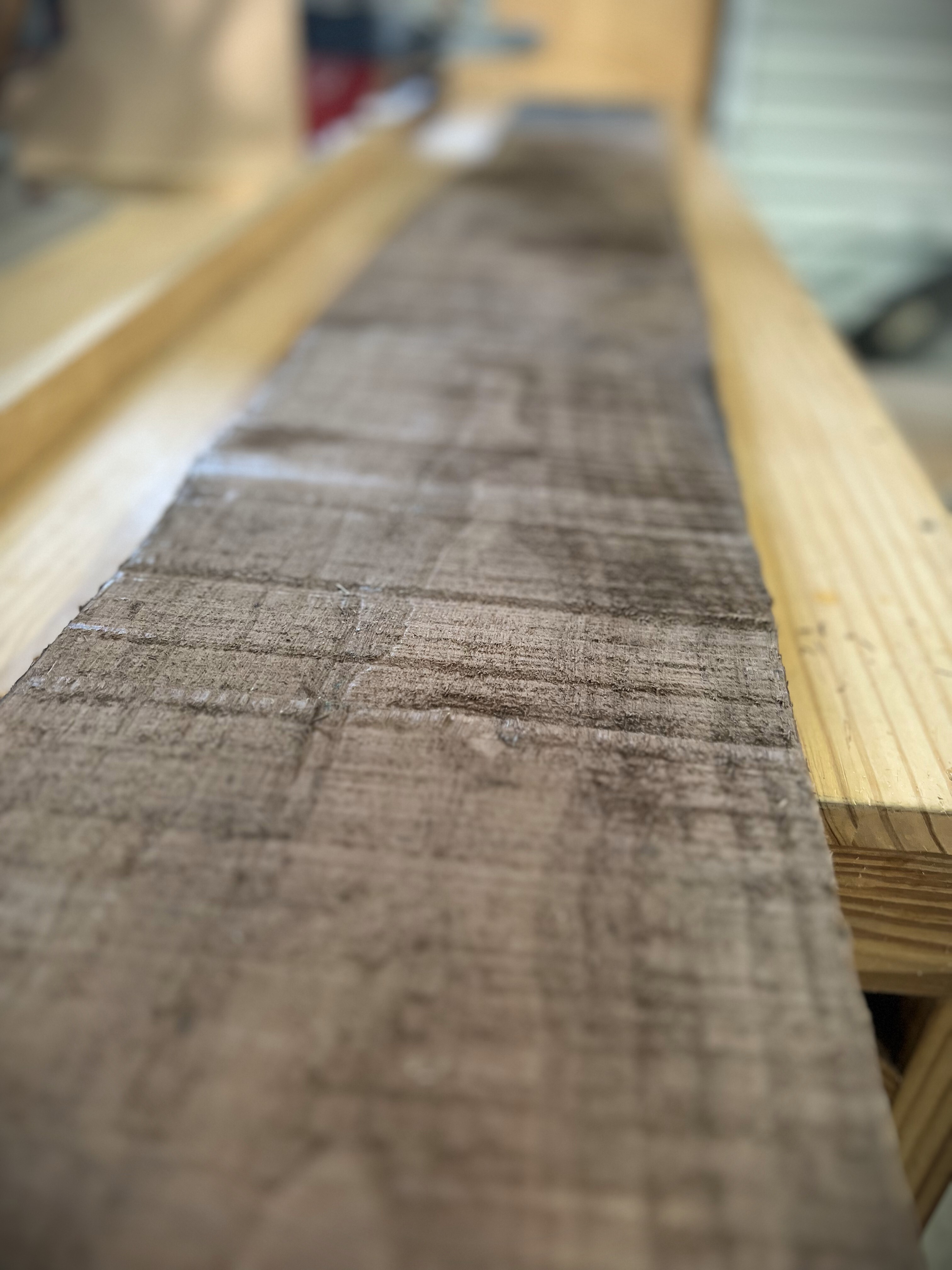
4. Size and Shape of the Cajon
- Impact on Articulation: The size and shape of the cajon influence its articulation by affecting how sound waves are produced and projected. A smaller cajon with less internal volume typically produces a more focused, articulate sound, as there is less space for sound waves to bounce around and create resonances. The shape, particularly the depth and width of the cajon, also determines how clearly the different frequencies are separated and how well each note is articulated.
- Example: I design each cajon with specific dimensions to optimize articulation. A more compact cajon might be ideal for players who prioritize clarity and precision, as it can produce a tight, focused sound that allows each note to be heard distinctly.
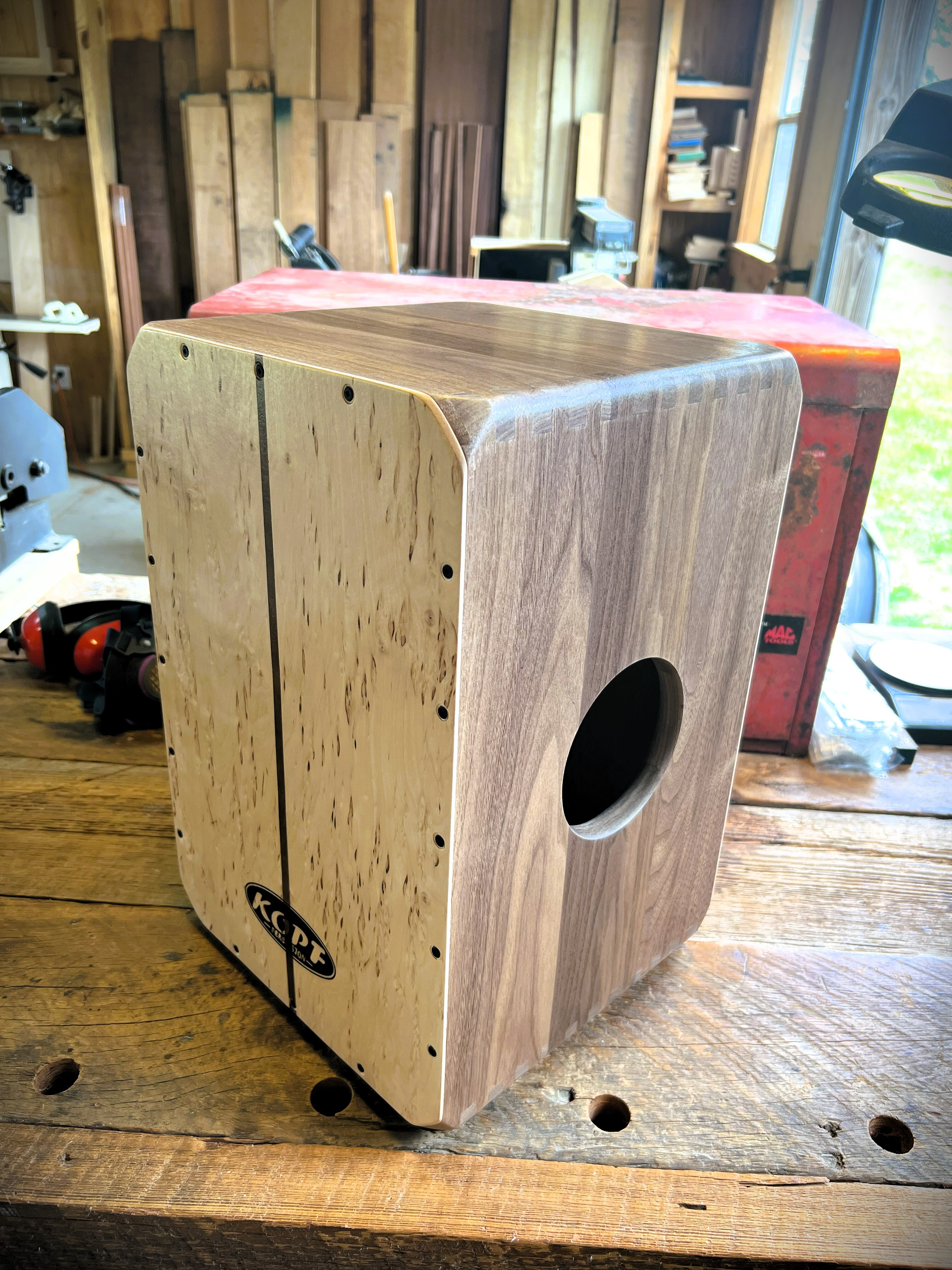
5. Snare System and Its Impact on Articulation
- Impact on Articulation: The snare system inside the cajon can either enhance or detract from articulation. A well-balanced snare system that is properly adjusted can add a sharp, articulate snare sound that complements the bass tones without interfering with the overall clarity. However, if the snares are too loose or too prominent, they might introduce a buzzing sound that blurs the articulation.
- Example: I build my snare systems to ensure that it enhances the articulation of the cajon’s tones. The snare effect is designed to provide crisp, clear sounds without overwelming the bass tone, ensuring that each strike is well-articulated.
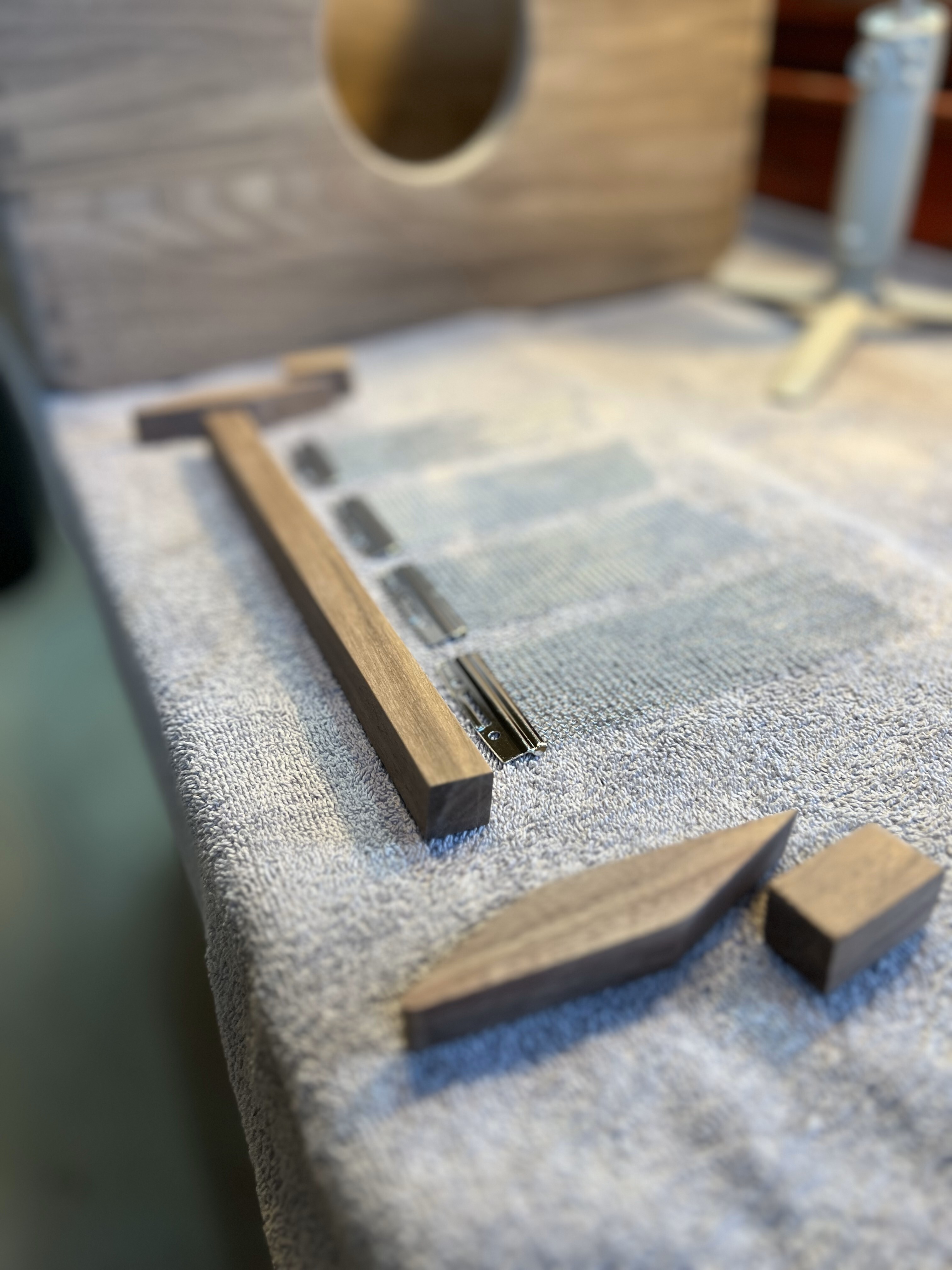
6. Sound Hole Size and Placement
- Impact on Articulation: The size and placement of the sound hole significantly influence how sound is projected and how clearly different frequencies are articulated. A larger sound hole allows more air to escape, which can reduce resonance and help minimize low-end muddiness, enhancing overall clarity. A smaller sound hole, on the other hand, tends to retain more bass frequencies, which can affect articulation if not properly balanced. While many cajons place the sound hole at the back, I position mine on the side. In my oppinion, this side placement changes the way the sound projects, allowing for a more immediate and balanced articulation across the tonal range.
- Example: At Kopf Percussion, I carefully experiment with different sound hole sizes and placements to achieve the best balance between articulation and projection. By positioning the sound hole on the side, I believe that I am able to enhance the clarity of each note and produce a more focused, expressive sound.
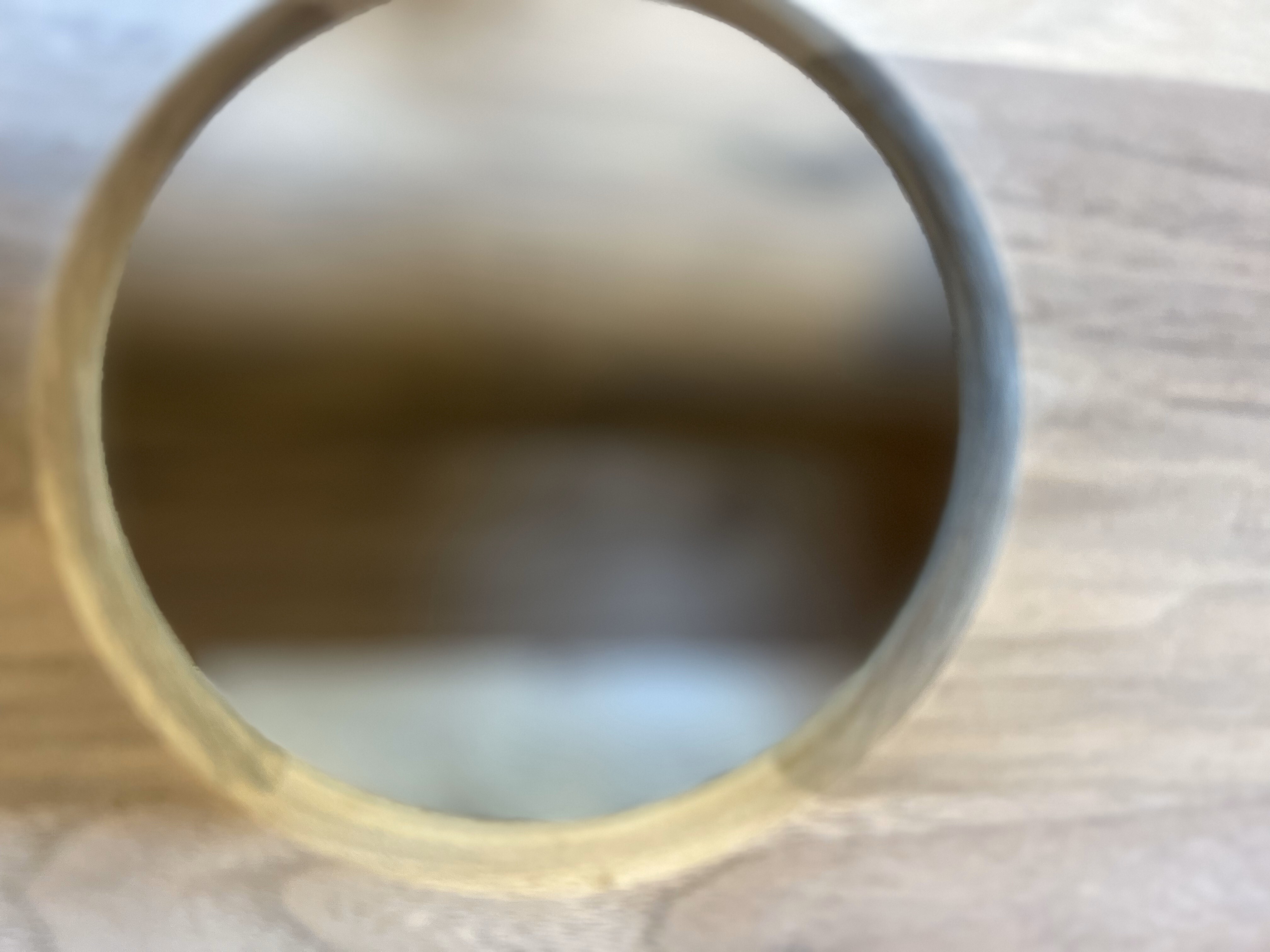
Conclusion: Enhancing the Articulation of Your Cajon
Articulation is a critical characteristic of a cajon’s tone, allowing the instrument to produce precise, well-defined sounds that stand out in any musical context. By understanding what affects the articulation—such as the materials used, the construction- I can tailor your instrument’s sound to achieve the crisp, clear tones you’re looking for.
At Kopf Percussion, I’m dedicated to crafting cajons that offer the perfect balance of articulation, tone, and resonance. Each cajon is designed with careful attention to detail, ensuring that you get the best possible sound for your music. If you’re interested in exploring my collection of handcrafted cajons and finding the one that’s right for you, check out my offerings here. Let’s work together to create the perfect articulation for your playing style.


